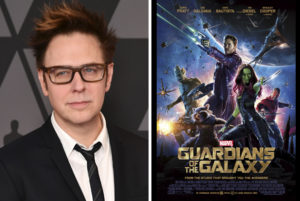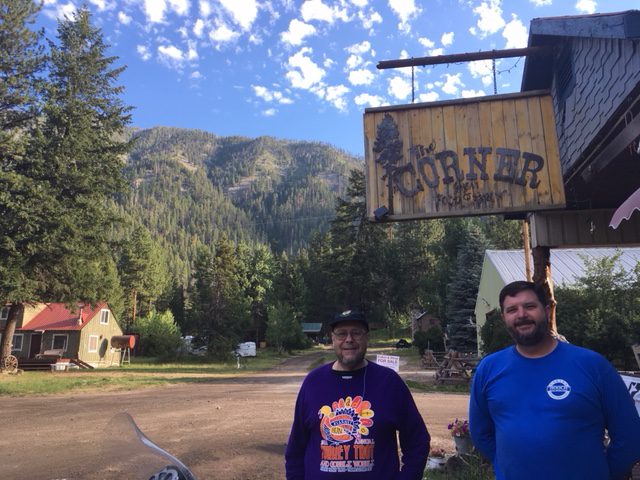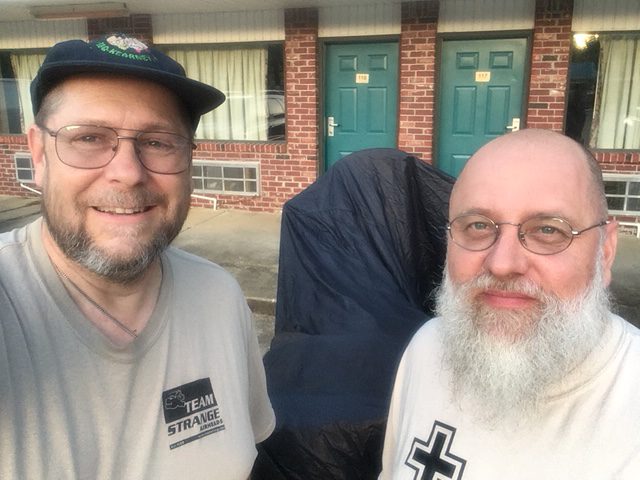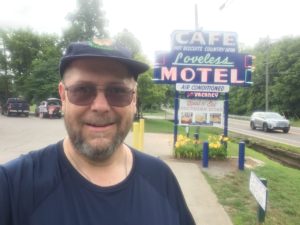Last week, Disney fired director James Gunn from the Guardians of the Galaxy movie franchise over a number of offensive tweets he posted dating back to 2009. Though the tweets were not hidden, they were brought to people’s attention when alt-right activist Mike Cernovich dug them out and started publicizing them. The tweets have since been deleted.
To be clear: Eight to 10 years ago, when James Gunn was an edgy, independent filmmaker, he had a habit of posting highly offensive homophobic, pedophiliac rape “joke” tweets.
Gunn accepted his firing from GOTG 3 with grace, and apologized for the old tweets. Gunn wrote in a statement:
“My words of nearly a decade ago were, at the time, totally failed and unfortunate efforts to be provocative. I have regretted them for many years since — not just because they were stupid, not at all funny, wildly insensitive, and certainly not provocative like I had hoped, but also because they don’t reflect the person I am today or have been for some time.
“Even these many years later, I take full responsibility for the way I conducted myself then. All I can do now, beyond offering my sincere and heartfelt regret, is to be the best human being I can be: accepting, understanding, committed to equality, and far more thoughtful about my public statements and my obligations to our public discourse. To everyone inside my industry and beyond, I again offer my deepest apologies. Love to all.”
Cernovich, of course, was not offended by Gunn’s tweets. Instead, he appears to have been looking for a way to cause trouble for Disney because they fired Roseanne Barr for a series of recent racist tweets. He also was after Gunn because he has been a vocal critic of President Trump.
Cernovich attempted to portray Gunn as a pedophile who genuinely liked what he was joking about in his tweets. This connects to a larger conspiracy theory that people in Hollywood and members of the Democratic Party have a secret pedophile conspiracy. (Dig into “Pizzagate” if you are so inclined.) (If you must read what Cernovich wrote, here’s a link. I’m a bit reluctant to give him the traffic, but I always think it is useful to see the original source material. )
That Gunn had an offensive online presence has been known about since he was first hired by Disney to helm GOTG. The feminist geek culture site The Mary Sue had a post about Gunn back in 2011 about “The 50 Superheroes You Most Want to Have Sex With.” Blogger Susana Polo wrote at The Mary Sue:
“The post is dated February 11th, 2011, and apparently sat around for nearly two years before it was noticed recently. It was still live late last night when I noticed pretty much every comics-related blog I follow on Tumblr talking in various shades of disgust about its content, but it has since been taken down. Naturally, it’s still available by Google Cache.
“Lets be clear: there’s nothing wrong about running a poll for the most sex-able superhero on your site, especially one where you embrace the fact that Batman and Gambit come in within the top five. There isn’t anything wrong, in that context, of choosing art that sexualizes the characters in it. There isn’t even anything wrong with talking explicitly about sex in your commentary on the poll results. What’s wrong is the sheer amount of slut-shaming (on only the female characters) and anti-gay language that Gunn directs towards the majority of the male characters. These are not opinions befitting somebody who’s been given the task of bringing a major part of the Marvel Universe to the big screen (a set of characters, I might add, that includes a lesbian superhero couple, not that they’ll be appearing in Guardians).”
This critique of Gunn resulted in an apology from the director that was well received by Polo and by members of the gay community:
“A couple of years ago I wrote a blog that was meant to be satirical and funny. In rereading it over the past day I don’t think it’s funny. The attempted humor in the blog does not represent my actual feelings. However, I can see where statements were poorly worded and offensive to many. I’m sorry and regret making them at all. People who are familiar with me as evidenced by my Facebook page and other mediums know that I’m an outspoken proponent for the rights of the gay and lesbian community, women and anyone who feels disenfranchised, and it kills me that some other outsider like myself, despite his or her gender or sexuality, might feel hurt or attacked by something I said. We’re all in the same camp, and I want to do my best to make this world a better place for all of us. I’m learning all the time. I promise to be more careful with my words in the future. And I will do my best to be funnier as well. Much love to all”
Gunn has had substantial support from the Hollywood community, with generally supportive tweets coming from multiple members of the GOTG cast, and this support has generated its own hashtag campaign – #WeAreGroot.
The big question to come out of all of this to me is: How long should people pay for their online sins?
Should their be some kind of statute of limitations for how long old tweets and blog posts can haunt a person? Are we all responsible for everything we wrote when we were in college? (I, for one, can be happy that everything I wrote in college existed in the pre-Internet age.) Does every ill-advised post, even when made repeatedly over an extended period of time, carry a lifetime statute of limitations? Should it matter that you like/dislike the person apart from their post? Does it matter whether the revelation comes from someone acting in good faith or as a troll? Washington Post columnist Megan McArdle asks these and several other questions that we are going to need to deal with repeatedly in the new social media era. She writes:
“We don’t have a statute of limitations for murder, of course, and I’m not advocating a blanket amnesty for heinous offenses. … But people who merely made dumb jokes should be offered the chance to apologize and to start with a clean slate, rather than seeing their lives wrecked over ephemeral missteps. Few of us are the sort of relentless prig who has never made an off-color suggestion even in jest. Which means that few of us can survive in a world that refuses to let the dead past stay buried.”





















 So far, Phase 2 of my summer travels have been going well. But it is always wise to keep in mind my motto of “Proceed as the way opens” (from William Least Heat Moon’s travel book Riverhorse).
So far, Phase 2 of my summer travels have been going well. But it is always wise to keep in mind my motto of “Proceed as the way opens” (from William Least Heat Moon’s travel book Riverhorse).







